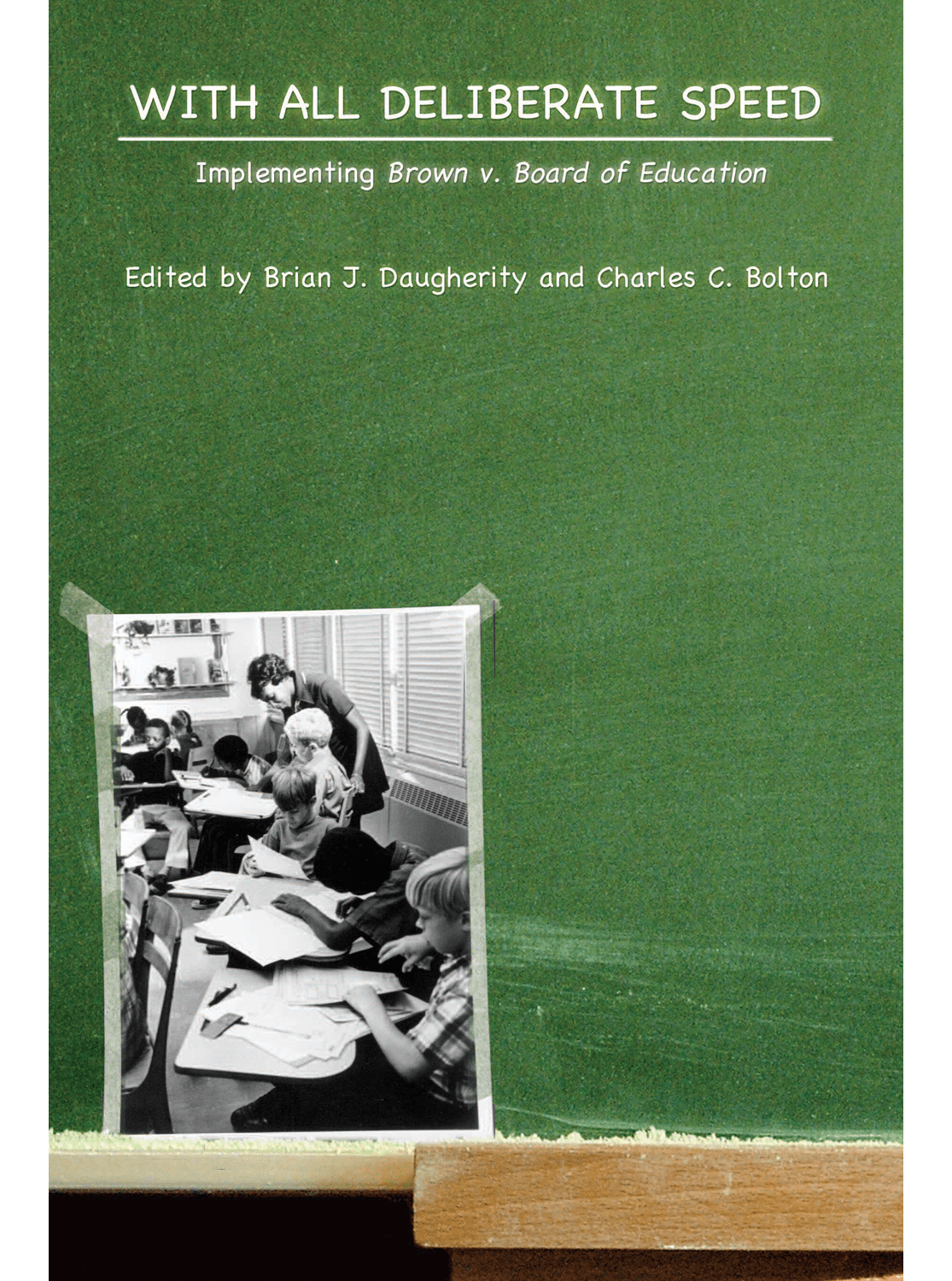This is the first effort to provide a broad assessment of how well the Brown v. Board of Education decision that declared an end to segregated schools in the United States was implemented. Written by a distinguished group of historians, the twelve essays in this collection examine how African Americans and their supporters in twelve states—Arkansas, North Carolina, Virginia, South Carolina, Georgia, Mississippi, Florida, Delaware, Missouri, Indiana, Nevada, and Wisconsin—dealt with the Court’s mandate to desegregate “with all deliberate speed.” The process followed many diverse paths.
Some of the common themes in these efforts were the importance of black activism, especially the crucial role played by the NAACP; entrenched white opposition to school integration, which wasn’t just a southern state issue, as is shown in Delaware, Wisconsin, and Indiana; and the role of the federal government, a sometimes inconstant and sometimes reluctant source of support for implementing Brown.
With All Deliberate Speed
$29.95
Implementing Brown v. Board of Education
Edited by Brian J. Daugherity and Charles C. Bolton
978-1-55728-869-1 (paper)
April 2008
“Brown v. Board of Education (1954) may well be the greatest and most morally inspiring decision issued by the U.S. Supreme Court in its history. But it is also a decision wherein, preeminently, the devil lies in the details—in the story of how Brown was implemented and of how the decision shaped both education and society in states where schools had formerly been segregated by law. Therefore, this volume of thorough and excellent essays, edited by Brian J. Daugherity and Charles C. Bolton, is especially valuable.”
—Journal of Southern History
“Without question, With All Deliberate Speed adds much to our understanding of the history and legacy of the Brown decision and also raises significant questions about the broader civil rights movement. This carefully researched and lucidly written volume is a must-read for those interested in this crucial period in American and African American history. All parties involved in this venture should be highly commended for their pathbreaking and much-needed collection.”
—Indiana Magazine of History, September 2009
“These essays offer a rich portrait of individuals struggling to turn the constitutional principal of Brown into educational opportunity for the nation’s African American children … by attempting to lay out the varieties of experiences with school desegregation across the nation …. this volume serves a valuable purpose.”
—Journal of American History
“Covers significant ground by exploring various local and state approaches to desegregation. Recommended.”
—Choice
“An important addition to the literature on the subject.”
—Georgia Historical Quarterly
“The collection is well researched and the articles are cogently argued.”
—Alabama Review
“An important and ambitious volume. . . . It contributes to a fuller understanding of the history and legacy of Brown and raises important questions about the broader thrust of the Civil Rights Movement and the nature of its achievements.”
—Patricia Sullivan, University of South Carolina, author of Days of Hope: Race and Democracy in the New Deal Era
“This book addresses a crucial question about twentieth century race relations and law. . . . An interesting collection of essays from an unexpected variety of places.”
—Robert J. Norrell, University of Tennessee, author of The House I Live In: Race in the American Century

